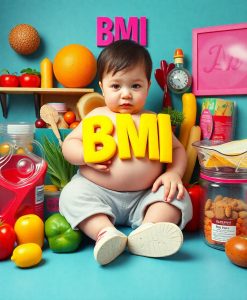How Early Body Changes Signal Long-Term Childhood Obesity Risks
Feeling the gentle weight of a preschooler’s body—how it shifts, how it feels in your arms or on your lap—can tell us more than we realize about their future health. You might notice that some children don’t quite shed the extra weight they carried as infants, or that their body size stays steady despite active play. These subtle sensations—like a persistent fullness or a body that doesn’t seem to thin out naturally—are more than just fleeting impressions. They are clues, an early warning system that signals the potential for childhood obesity down the road.
Understanding these early signals involves tuning into the natural rhythms of a child’s growth. Between ages 1 and 6, most children experience a decline in their body mass index (BMI), a process that often feels like watching a small, round pebble gradually smooth out and settle. But for some preschoolers, this decline doesn’t happen as expected. Their bodies seem to hold onto a higher BMI, quietly suggesting that they may be more prone to developing full-fledged obesity by age 9.
Recognizing the early signs of childhood obesity risk in preschool years
This isn’t about quick fixes or dramatic interventions; it’s about becoming aware of the subtle shifts that can serve as early indicators of future health challenges. When a preschooler’s body seems to resist the usual natural weight loss phase, it’s a gentle prompt to pay closer attention. This might mean noticing that despite plenty of active play and healthy eating, their body remains comfortably rounded or doesn’t seem to slim down with age-appropriate growth patterns.
Parents and caregivers who learn to recognize these early signs—such as a consistently high BMI that doesn’t decline as expected—can work with health professionals to foster healthier habits before the situation becomes more entrenched. It’s about building awareness of the body’s quiet language, learning what it’s telling us about metabolism, activity, and nutrition in these formative years.
The beauty of this approach lies in its gentle, observant nature. It’s not about blame or shame but about understanding that the seeds of long-term health are often sown early. When we listen to how a child’s body naturally changes, we empower ourselves to support healthier trajectories—whether through encouraging more active play, balanced nutrition, or simply being attentive to their unique growth patterns.
Why paying attention to preschool BMI matters for lifelong health

Recognizing that preschoolers who don’t naturally lose weight may be on a different growth path shifts the conversation from reactive to proactive. It’s about embracing a mindset that early physical cues are meaningful, that they can help us intervene early enough to alter the course. The goal isn’t to scrutinize or stress but to foster a supportive environment where children can develop their healthiest selves—physically and emotionally.
As caregivers and health advocates, this understanding invites us to observe with kindness, to tune into the body’s quiet signals, and to nurture habits that promote long-term well-being. By paying close attention now—when children are in their earliest years—we can help lay the groundwork for healthier futures, where obesity doesn’t become an inevitable chapter in their story.
Early childhood body changes matter—they whisper secrets about future health, waiting to be heard. When we listen carefully, we open the door to supporting children in growing into their best, healthiest selves.
Learn More: Preschool BMI Can Predict Childhood Obesity Risk
Abstract: Preschoolers who don’t naturally lose weight are more likely to develop full-fledged childhood obesity by age 9, a new study says. Most kids tend to see their body-mass index (BMI) decline between ages 1 and 6, before starting to slowly gain weight as they grow, researchers’…
Link: Read Full Article (External Site)

